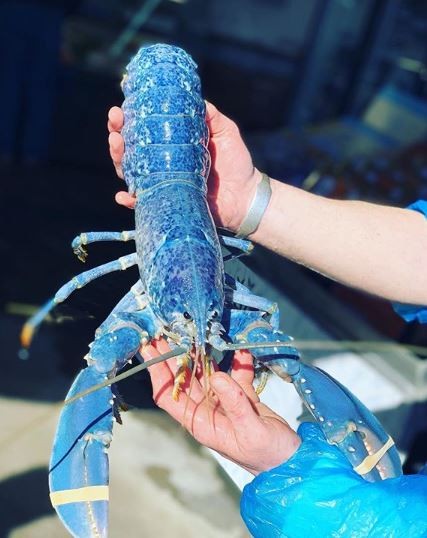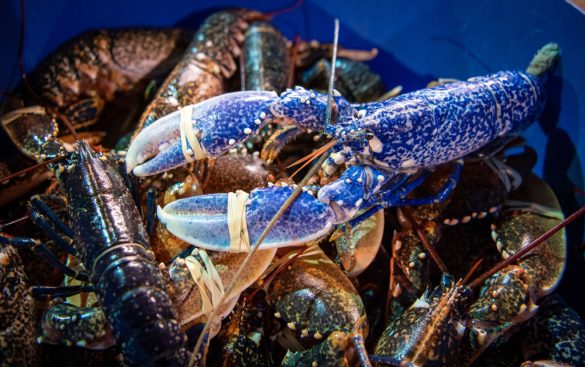European Blue Dragon: the bright pearl of rare seafood
First, the origin
The European Blue dragon is mainly distributed in the temperate and cold seas of the northeast Atlantic Ocean, including the coastal areas of Ireland, France, the United Kingdom, Iceland and Norway. These areas, with their cool waters, abundant sunlight and abundant Marine life resources, provide an ideal environment for the growth of the European blue dragon. Among them, the west coast of Ireland, with its unique Marine environment and climatic conditions, has become one of the main producing areas of the European blue dragon. The water here is clear and rich in dissolved oxygen, providing unique conditions for the growth of blue dragons.
Second, life habits
European blue dragons are typical benthic creatures that prefer to live in rocky crevices, coral reefs, and seaweed patches on the ocean floor. During the day, they hide in these shelters to avoid predators; At night, they become active and forage for food. The European blue dragon has a wide diet, mainly feeding on small fish, shrimp, shellfish and seabed plants. They are adept at using their chelates to catch prey, but also use their powerful gills to filter plankton from the water.
Third, appearance characteristics
The appearance of the European blue dragon is unique and beautiful, their body surface appears dark blue or bluish gray, with golden markings. These markings are like jewelry inlaid on the body surface, making the whole lobster look elegant and noble. Their shells are smooth and shiny, covered with fine textures that give off an attractive glow in the sun. In addition, the chelate of the European blue dragon was particularly strong and powerful, and its chelate was not only used for hunting and defense, but also became a symbol of their mighty momentum.
Fourth, the growth environment
European blue dragons are extremely demanding, requiring clear, pollution-free water and dissolved oxygen-rich seas for their habitat. These waters are usually located on the edge of the continental shelf, with moderate water depth and stable currents. In addition, the sand, rocks and rich seaweed resources on the seabed also provide an ideal growth space for them. In such an environment, the European blue dragon can fully absorb nutrients, grow healthily, and form delicious meat.

- Fishing season
The European blue dragon fishing season is mainly concentrated in spring and autumn each year. The sea temperature in these two seasons is moderate, which is conducive to the growth and reproduction of lobsters. When the fishing season comes, fishermen use professional fishing tools and techniques to carry out their operations. They usually go out at night, using the lights to attract lobsters to feed. When the lobsters approach the lights, the fishermen quickly catch them with nets. The entire fishing process requires the operation of experienced fishermen to ensure that the lobster caught is of high quality.
Vi. Practice
The European Blue Dragon has a variety of approaches to cooking, each of which can show its own unique delicacy. Steaming is a simple and common practice that preserves its original flavor to the greatest extent possible. During the steaming process, some ginger slices, scallions and cooking wine can be added to add flavor. In addition, brown sauce is also a common practice, which allows the lobster to fully absorb the flavor of the seasoning, the taste is mellow and endless aftertaste. Frying can make the lobster taste more crisp, with some vegetables and spices fried, delicious and delicious. Soup is a nutrient-rich practice, the lobster and a variety of ingredients together soup, can fully release its nutrients, so that the human body better absorb.
- Taste
The taste of the European blue dragon is very delicious, and the meat is delicate and elastic. Steamed European blue dragon taste light and delicious, can highlight its original flavor; Braised European blue dragon has a rich flavor of spices, mellow taste and endless aftertaste; Sauteed European blue dragon is crisp and delicious; The European blue dragon in soup can fully release its nutrients and umami, so that the human body can better absorb it. Either way, you can taste the unique taste of the European blue dragon.
- Nutritional value
European blue dragon is not only delicious, but also nutritious seafood. It is rich in protein, minerals and trace elements, such as calcium, phosphorus, iron, etc. These nutrients play an important role in enhancing physical strength, promoting bone growth and maintaining normal metabolic function of the human body. At the same time, the European blue dragon is also rich in unsaturated fatty acids, which help to lower cholesterol and prevent cardiovascular disease. Moderate consumption of European blue dragon can not only satisfy the enjoyment of taste buds, but also provide rich nutrition for the body and maintain good health.
To sum up, the European blue dragon has become a shining pearl in the seafood industry with its unique habitat, living habits, appearance characteristics, growing environment, fishing season, cooking method, taste and rich nutritional value. Whether it is a high-end French meal or a family dinner, the European blue dragon can become a spectacular dish and make people linger.

